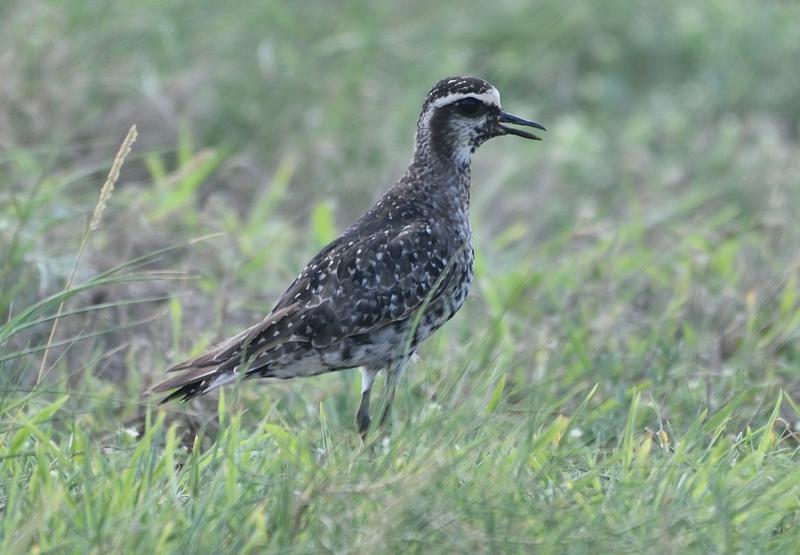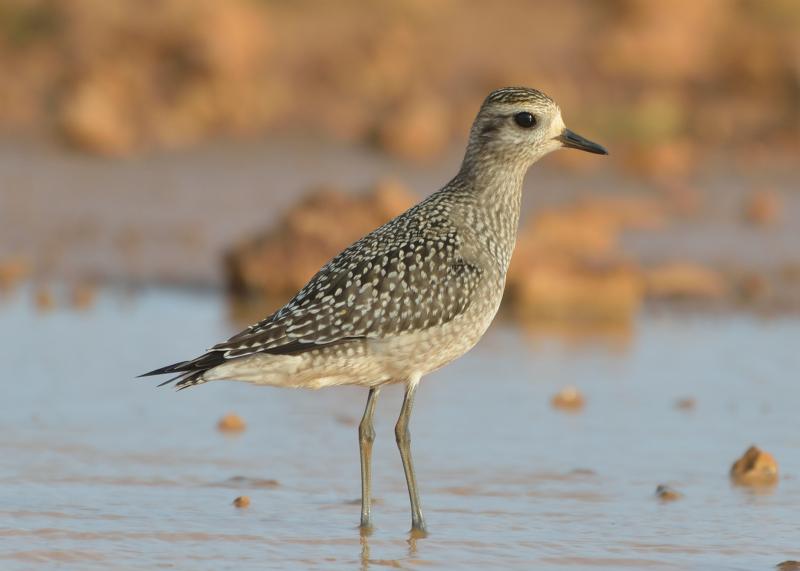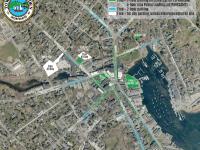Golden Birds of Aroostook County...and Brazil
 American golden-plovers, like this adult still showing some vestiges of breeding plumage photographed in fall on Aruba, are strong flyers that travel incredible distances from north to south each fall and back in the spring. An individual banded in Utqiagvik (formerly Barrow), Alaska, in June 2009 was found thousands of miles away on the island of Aruba (off the northern coast of South America) in October 2009. Courtesy of Michiel Oversteegen www.birdwatchingaruba.com
American golden-plovers, like this adult still showing some vestiges of breeding plumage photographed in fall on Aruba, are strong flyers that travel incredible distances from north to south each fall and back in the spring. An individual banded in Utqiagvik (formerly Barrow), Alaska, in June 2009 was found thousands of miles away on the island of Aruba (off the northern coast of South America) in October 2009. Courtesy of Michiel Oversteegen www.birdwatchingaruba.com
 Juvenile American golden-plovers, with their distinctive golden speckling on the back and wings, migrating south from the Arctic for the first time do so without the guidance of their parents. They are more apt to wander off track and also stay farther north later in the year than adults do. Courtesy of Michiel Oversteegen www.birdwatchingaruba.com
Juvenile American golden-plovers, with their distinctive golden speckling on the back and wings, migrating south from the Arctic for the first time do so without the guidance of their parents. They are more apt to wander off track and also stay farther north later in the year than adults do. Courtesy of Michiel Oversteegen www.birdwatchingaruba.com
 American golden-plovers, like this adult still showing some vestiges of breeding plumage photographed in fall on Aruba, are strong flyers that travel incredible distances from north to south each fall and back in the spring. An individual banded in Utqiagvik (formerly Barrow), Alaska, in June 2009 was found thousands of miles away on the island of Aruba (off the northern coast of South America) in October 2009. Courtesy of Michiel Oversteegen www.birdwatchingaruba.com
American golden-plovers, like this adult still showing some vestiges of breeding plumage photographed in fall on Aruba, are strong flyers that travel incredible distances from north to south each fall and back in the spring. An individual banded in Utqiagvik (formerly Barrow), Alaska, in June 2009 was found thousands of miles away on the island of Aruba (off the northern coast of South America) in October 2009. Courtesy of Michiel Oversteegen www.birdwatchingaruba.com
 Juvenile American golden-plovers, with their distinctive golden speckling on the back and wings, migrating south from the Arctic for the first time do so without the guidance of their parents. They are more apt to wander off track and also stay farther north later in the year than adults do. Courtesy of Michiel Oversteegen www.birdwatchingaruba.com
Juvenile American golden-plovers, with their distinctive golden speckling on the back and wings, migrating south from the Arctic for the first time do so without the guidance of their parents. They are more apt to wander off track and also stay farther north later in the year than adults do. Courtesy of Michiel Oversteegen www.birdwatchingaruba.com
There are certain birds that really capture the imagination. One of those, for us, and perhaps for many other birders, is the American golden-plover.
The breeding range extends across the top of the world—from the Canadian and Alaskan Arctic region south into the northern portion of the Boreal biome.
After the short northern summer, though, the birds fly south to spend the northern winter in the southern hemisphere summers of southern South America from Brazil to Argentina and occasionally to Chile.
That’s an incredibly long distance to travel. An American golden-plover nesting on Nunavut’s Southampton Island, at the north end of Hudson Bay, would fly more than 7,000 miles to reach a wintering location in northern Argentina. Some individuals may go a thousand or more miles farther than that.
In the fall, birds may depart on their southward migration from eastern Canada or New England and fly non-stop over the Atlantic Ocean for three to five days to reach first landfall in northeastern South America.
Eskimo curlews followed a similar migratory path before they were hunted to extinction—the last record for Maine was of four birds shot at Schoodic Point in 1929. American golden-plovers were also heavily market-hunted across the U.S. including here in Maine, where they were said to have been sold in the 1850s in Portland markets for twenty-five cents a dozen.
While American golden-plovers didn’t go extinct, as did Eskimo curlew, their numbers never rebounded to their former abundance. Recent estimates suggest there may have been as many as 500,000 individuals. Unfortunately, it appears as though populations have had a major decline over the last 40 years.
Here in Maine, it is always a treat to find even one American golden-plover in the fall, usually along the coast at a traditional shorebird stopover site. As noted in “Birds of Maine,” back in the 1960s and 1970s, flocks of over a hundred bird were sometimes counted in the fall in the farm fields where the Bangor Mall now sits. In the 1980s and 1990s, up to about 60 birds were tallied regularly on agricultural fields in Turner in October.
Numbers like that hadn’t been recorded here in Maine in the last 20 years.
That is, until the past two weeks.
According to eBird records, nearly 200 of these beautiful birds have been found in agricultural fields near Limestone in Aroostook County. Photos show many, perhaps most, look like adults rather than the juveniles that predominate as the season progresses. When they decide to start the long, nonstop flight south, do they just depart directly from there and bypass the coast? Is that why it’s rare to see more than a handful at a time at coastal spots?
Just for fun we looked in eBird to see if many American golden-plovers were already in the Caribbean and South America. In the last week, quite large numbers have been coming into Barbados, an island where shorebirds like this were traditionally hunted at certain wetlands and where, incidentally, the last known Eskimo curlew was shot in 1963. We are not sure how much shorebird hunting takes place there now but we sure hope it has been curtailed. Our friend Michiel Oversteegen has already found a few on the island of Aruba, off the Venezuelan coast, in September although the larger numbers don’t usually appear there until October or November. Even farther south, in the heart of the Amazon basin near Manaus, Brazil, numbers of American golden-plovers have been spotted in the last few days.
Isn’t it crazy that we can follow the migration of birds so immediately as is nowadays possible with eBird? All of this makes us want to start checking fields in our area with the hope that we might have the good luck to find a flock of these golden birds before they all depart to South America.
Jeffrey V. Wells, Ph.D., is a Fellow of the Cornell Lab of Ornithology and Vice President of Boreal Conservation for National Audubon. Dr. Wells is one of the nation's leading bird experts and conservation biologists. He is a coauthor of the seminal “Birds of Maine” book and author of the “Birder’s Conservation Handbook.” His grandfather, the late John Chase, was a columnist for the Boothbay Register for many years. Allison Childs Wells, formerly of the Cornell Lab of Ornithology, is a senior director at the Natural Resources Council of Maine, a nonprofit membership organization working statewide to protect the nature of Maine. Both are widely published natural history writers and are the authors of the popular books, “Maine’s Favorite Birds” (Down East Books) and “Birds of Aruba, Bonaire, and Curaçao: A Site and Field Guide,” (Cornell University Press).






















